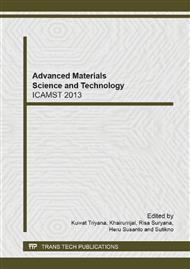p.253
p.259
p.263
p.267
p.272
p.276
p.280
p.284
p.288
The Effect of Repeated Impingement on UHMWPE Material in Artificial Hip Joint during Salat Activities
Abstract:
In Indonesia, a country with largest Muslim population in the world, the necessity to study the artificial hip joint which allows Muslim patients with total hip replacement to have normal Salat becomes important issues. This paper discusses the effect of impingement which occurs during one of the Salat movements. i.e. last tashahhud sitting motion. An artificial hip joint model, proposed by previous researcher from developed country, is simulated using finite element analysis to perform last tashahhud sitting motion. The result shows that impingement occurs and causes the plastic deformations and plastic strains in the acetabular liner component which is manufactured from UHMWPE material. The repetition of Salat movement induces repeated impingements and higher plastic deformation. It experiences dimensional change in the liner lip and has a potency to cause clinical failure of total hip replacement. A new design of the artificial hip joint is required to be proposed to avoid the repeated impingement and deformations.
Info:
Periodical:
Pages:
272-275
Citation:
Online since:
February 2014
Authors:
Keywords:
Price:
Сopyright:
© 2014 Trans Tech Publications Ltd. All Rights Reserved
Share:
Citation:


